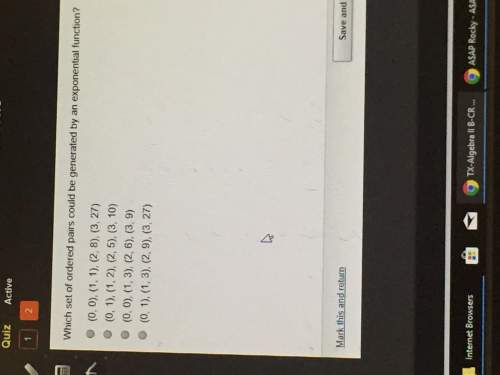
Mathematics, 04.12.2019 03:31 cloey6544
This is an exercise around linearization of a scalar system. the scalar nonlinear differential equation we have is r(t)= sin(x(t)) + u(t). (a) the first thing we want to do is find equilibria (dc operating points) that this system can support. suppose we want to investigate potential expansion points (x",u") with u. = 0. sketch sin(x*) for 4π x< 4π and intersect it with the horizontal line at 0 this will show us the equilibria points. where sin(x0. (b) show that all r(r) = satisfy (7) together with u" = 0. let us zoom in on two choices: π and representative points.) = o. (looking at the sketch we made, these seem like (c) linearize the systern (7) around the equilibrium (x0,u") = (0,0). what is the resulting linearized scalar differential equation for (t)-x-x(t)-0, involving udr) = u(r) _ u" = u(t) 0? (d) for the linearized approximate system model that you found in the previous part, what happens if we try to discretize time to intervals of duration δ? assume now we use a piecewise constant control input over duration δ, that δ is small relative to the ranges of controls applied, and that we sample the state x every δ (that is, at every 1 na where n is an integer) as well write out the resulting scalar discrete-time control system model. this model is an approximation of what will happen if we actually applied a piecewise constant control input to the original nonlinear differential equation. (e) is the (approximate) discrete-time system you found in the previous part stable or unstable? (f) now linearize the system (7) around the equilibrium (x, u") ( π.0), what is the resulting approximate scalar differential equation ) 0? (g) for the linearized system model that you found in the previous part, what happens if we try to discretize time to intervals of duration δ? assume now we use a piecewise constant control input over duration that δ is small relative to the ranges of controls applied, and that we sample the state x every δ (that is, at every , = na, where n is an integer) as well, write out the resulting scalar discrete-time control system. this model is an approximation of what will happen if we actually applied a piecewise constant control input to the original nonlinear differential equation. (h) is the (approximate) discrete-time system you found in the previous part stable or unstable? (i) suppose for the two discrete-time systems above, we chose to apply a feedback law u(r) =-k(x(1) x"). for what range of k values, would the resulting linearized discrete-time systems be stable? your answer will depend on δ.

Answers: 1


Another question on Mathematics


Mathematics, 21.06.2019 21:30
Damon makes 20 cups of lemonade by mixing lemon juice and water. the ratio of lemon juice to water is shown in the tape diagram. lemon juice\text{lemon juice} lemon juice water\text{water} water how much lemon juice did damon use in the lemonade? cups
Answers: 3

Mathematics, 21.06.2019 22:20
Which strategy is used by public health to reduce the incidence of food poisoning?
Answers: 1

Mathematics, 21.06.2019 23:10
In which quadrant does the point lie? write the coordinates of the point. a. quadrant ii; (–2, –4) b. quadrant iii; (2, 4) c. quadrant iii; (–2, –4) d. quadrant iv; (–4, –2)
Answers: 3
You know the right answer?
This is an exercise around linearization of a scalar system. the scalar nonlinear differential equat...
Questions


Mathematics, 18.10.2020 07:01

Mathematics, 18.10.2020 07:01

Spanish, 18.10.2020 07:01



Mathematics, 18.10.2020 07:01

Mathematics, 18.10.2020 07:01

Mathematics, 18.10.2020 07:01

Mathematics, 18.10.2020 07:01




Mathematics, 18.10.2020 07:01


Mathematics, 18.10.2020 07:01


Mathematics, 18.10.2020 07:01





